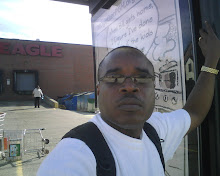We (Dr. MCClure and I) spent the last year and a half discussing emerging technology and its role in disaster mitigation and response. one such technology is the cell phoneIt is hard to tell, given the pace of cell phone evolution, how best to use what is available to reduce hurricane damage and in particular loss of lives. As cell phones become ubiquitous, they provide wonderful opportunities to reach a large number of people at the same time. LIME formerly Cable and Wireless (Dominica) Ltd., has been to my mind at the forefront of using text messaging for advertising and promotion both for its own purposes and for local business in Dominica particularly those with which it has some affiliation. Recall, it was Cable and Wireless after Hurricane David in 1979, after its infrastructure was completely destroyed moved into direct dialling and made Dominica, the first country in the world to go distance direct dialling (DDD) completely.
In collaboration with the DBS radio, the national radio station, the company provides public service announcement for disaster preparedness. I also believe they have begun to use text messaging via mobile phones to transmit disaster preparedness announcements and alerts. Call this being at the forefront. The company has also run its cables underground to ensure that during disasters there is uninterrupted service. Lessons learnt from past disasters.
The University of Pittsburgh has a voluntary emergency alert for which students can sign both via Internet and mobile phones. These provide alert when emergencies exist. To date I have received two alerts. For one of those I was in class when my mobile went off (vibrate of course)with the alert. Interestingly, mine was the only one. Having related the information to the class, I wonder what would have happened had the threat been real and no one had received that text alert. Pitt is huge and there is no better system available in an open campus to reach students all at once than through mobile phones. It is unfortunate given the nature of school violence and the open campus that such a service is not compulsory for all students. Timely information in the face of disaster or emergency can result in reduced impact and loss of lives.
The current impasse in Iran and the caveats placed on mainstream media have again brought the mobile phone center stage but it also brought twitter with it. Imagine how much the world would have missed and how much carnage would have gone on unreported. Who knows the impact cell phones and twitter may be having in saving lives in Iran.
Recently, I signed up for facebook and found my long lost friends, including my college roommate. These days smart phones allow one to navigate the Internet. I am sure you will guess that I own, and for while now, one of these smart phones. Any disaster savvy person should own one and I imagine with the push of button be able to warn friends of impending danger.
A few years ago, I prepared a policy paper on the use of cell phones in Dominican schools. I still believe in this respect that it should be monitored and managed but I also believe with increasing threats in and to schools, mobiles can be useful tools in helping to keep children safe; in alerting parents. Equipped with GPS technology these phone can quickly provide information on evacuation routes and assist in navigation and travel especially in unknown territories. Kids hands have become so proficient on these ting key pads, they can send messages with alacrity. They may be able to help save their lives and those of their friends. I imagine we cannot turn the tide on these apparatuses and the concept of them as gadgets have faded. These are mobile phones with the technology to help save lives and reduce the impact of disasters and emergencies.
Subscribe to:
Post Comments (Atom)

No comments:
Post a Comment